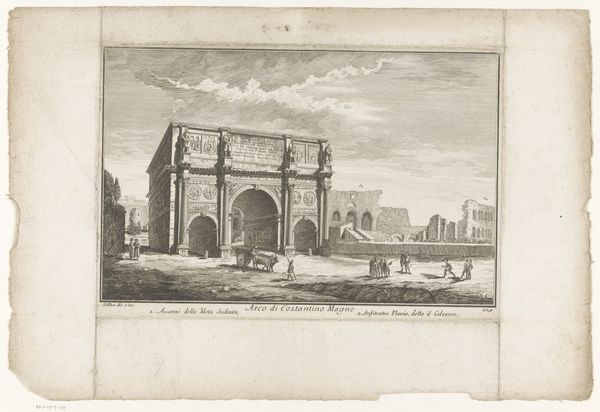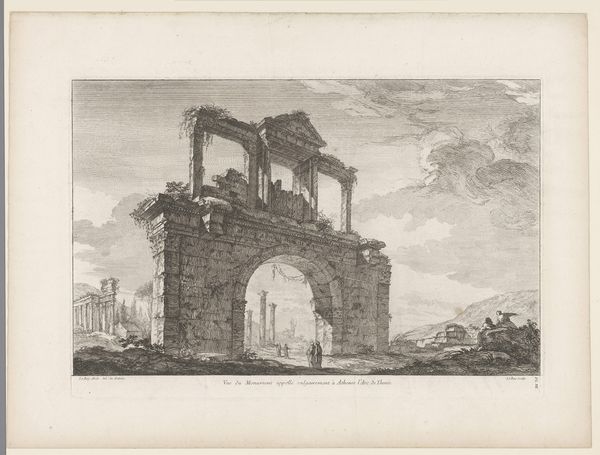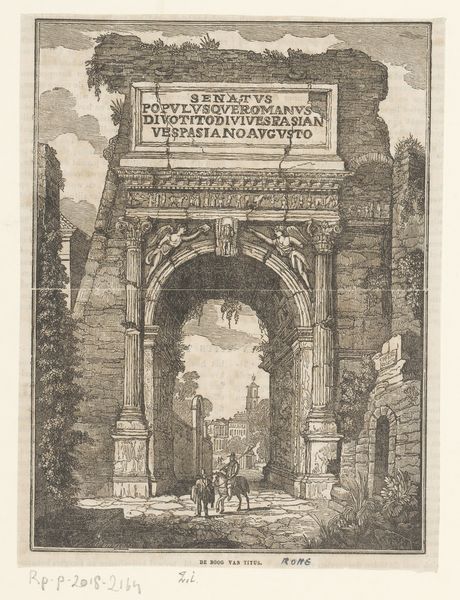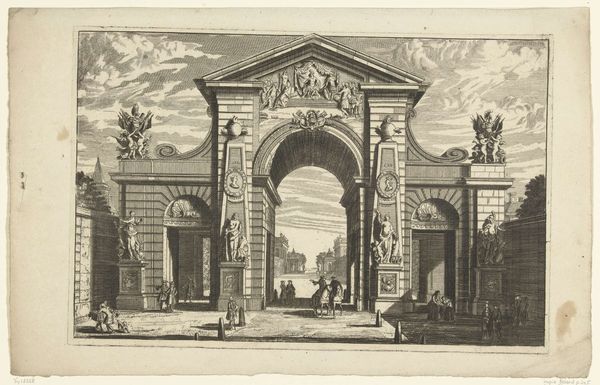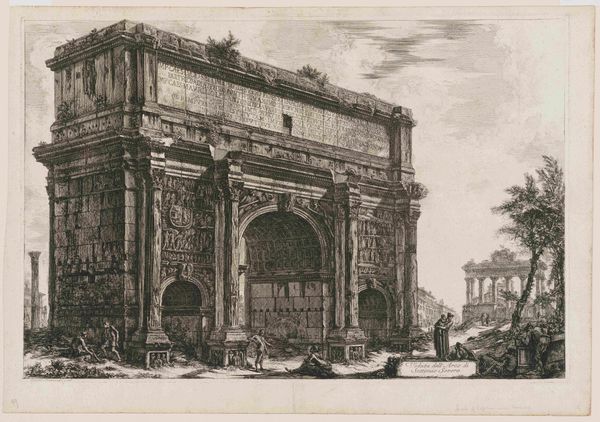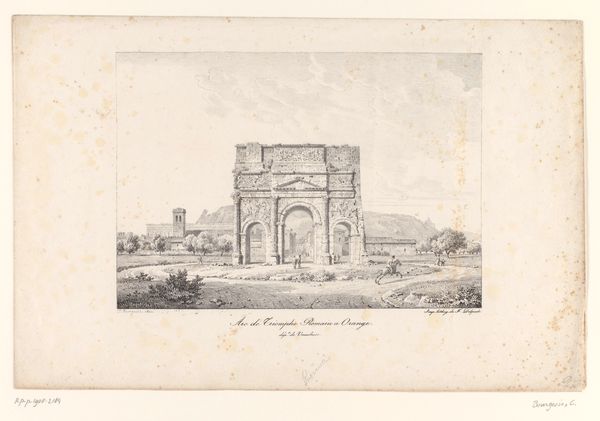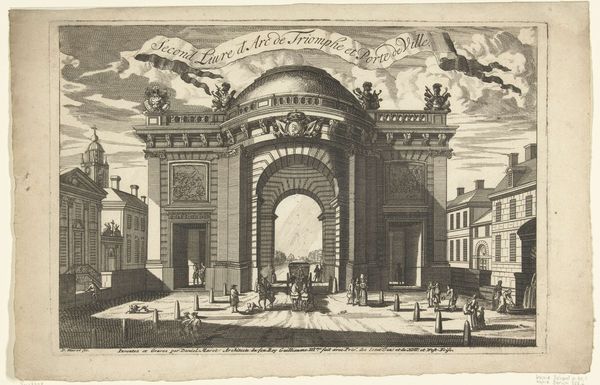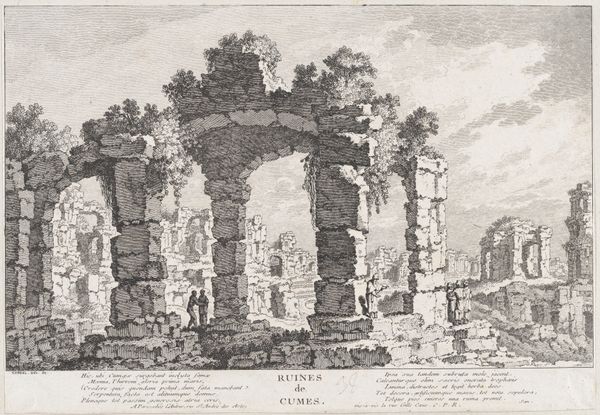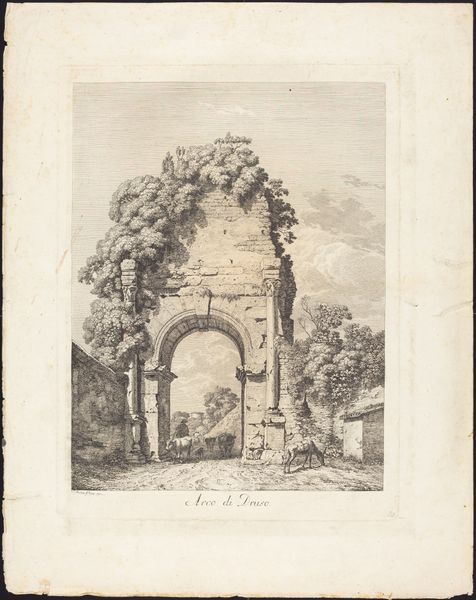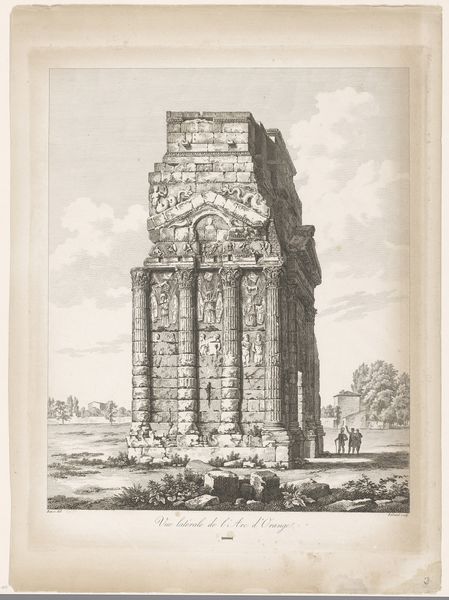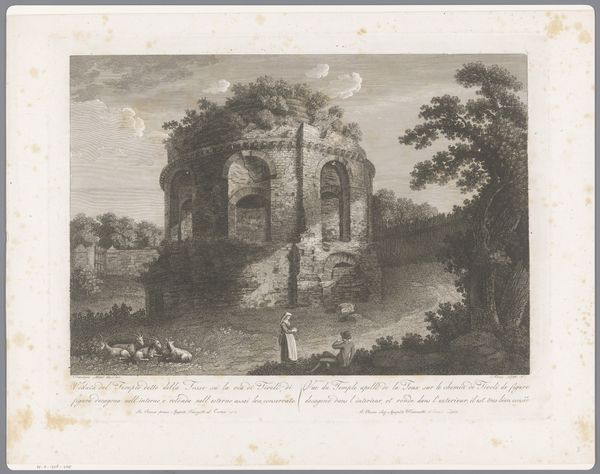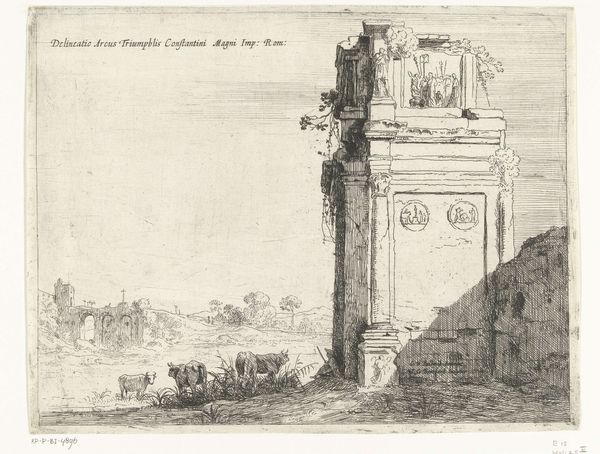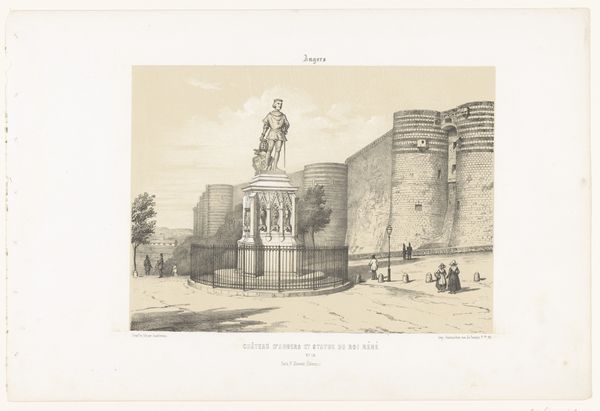
print, engraving, architecture
#
neoclacissism
# print
#
old engraving style
#
landscape
#
19th century
#
cityscape
#
engraving
#
architecture
Dimensions: height 460 mm, width 566 mm
Copyright: Rijks Museum: Open Domain
Louis Pierre Baltard made this print of the Triomfboog van Orange. During the 18th century, images of Roman architecture took on a life of their own, becoming symbols of political power and cultural authority. Ancient arches, like this one in the south of France, were potent reminders of past empires. They spoke of a time when law and order were dictated from a single center. In revolutionary France, artists and politicians looked to Rome for guidance in establishing new codes of governance. Baltard's print highlights both the grandeur and the decay of the arch. Its crumbling facade suggests the transience of power, while its overall structure implies enduring strength. It’s up to us, as historians, to examine sources, such as letters, diaries, and political pamphlets, to understand better the complex meanings that viewers then invested in such images. Ultimately, this print reminds us that art's significance is always tied to its historical context.
Comments
No comments
Be the first to comment and join the conversation on the ultimate creative platform.
